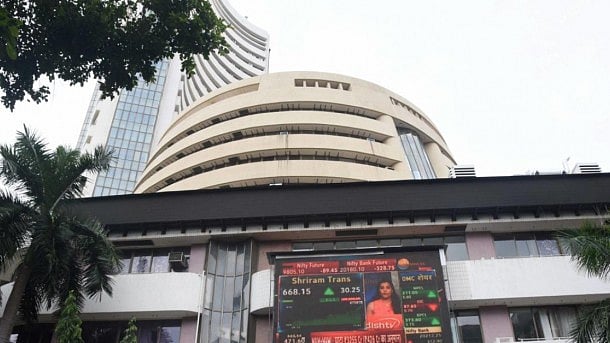
Both Sensex and Nifty ended on a low.
Credit: PTI Photo
New Delhi: The US tariff threats created volatility in the Indian stock markets with key indices closing in the red led by heavy selling pressure in export-heavy sectors like auto, textiles, energy and pharma.
The markets started the day with deep cuts. Key indices, Sensex of the BSE and Nifty 50 of the NSE, dipped by around 1% in the early trade. However, the markets witnessed a sharp recovery in the afternoon with both Sensex and Nifty turning positive.
The last hour selling pushed the indices in the negative again. The Sensex ended the day 0.35% or 296.28 points down at 81,185.58 points. The wider Nifty 50 of the NSE shed 0.35% or 86.70 points to close at 24,768.35 points.
“Investors gravitated toward domestically oriented, non-discretionary players, especially FMCG, which offered attractive valuations, demand outlook and relative insulation from tariff risks,” said Vinod Nair, Head of Research at Geojit Investments Limited.
“In contrast, oil & gas stocks were the worst hit due to US warnings over Indian energy imports. Overall, the market reflected a cautious yet selective approach. Market continues to hold high hopes for a more favorable tariff outcome in the near-term,” Nair said.
Nifty smallcap 100 index tumbled by over 1% while Nifty midcap 100 closed 0.93% lower. Auto, IT and banking indices also closed sharply lower.
The index heavyweight Reliance Industries dipped by 1.39% to Rs 1390.30. Tata Steel, Sun Pharma, Adani Ports, NTPC, Infosys, and TCS were among the major Sensex losers.
“All major sectors, except FMCG, came under pressure, with pharma, metal, and energy emerging as the top losers. The broader indices also resumed their corrective phase, each losing over a percent,” said Ajit Mishra, senior vice president – research at Religare Broking Ltd.
Mishra advised investors to trade cautiously in the coming days. “As the new series begins, the market is likely to consolidate, but global developments and corporate earnings will continue to drive volatility. We maintain our cautious stance and recommend a stock-specific approach, given the mixed trends across sectors. Traders should also avoid averaging down on loss-making positions,” he added.
Analysts said the Indian rupee would also remain under pressure due to the elevated tariffs. The rupee declined by 22 paise to 87.64 against a dollar.
Jateen Trivedi, VP Research Analyst - Commodity and Currency, LKP Securities, said the imposition of a 25% tariff on India by the US added significant pressure on the Indian currency.
NEW DELHI: NSE NIFTY. PTI GRAPHICS.
“Sentiment was further dampened by weakness in the capital markets amid ongoing tariff-related concerns. Going ahead, the rupee is expected to remain under pressure with a broader trading range seen between 87.25 and 88.00,” Trivedi added